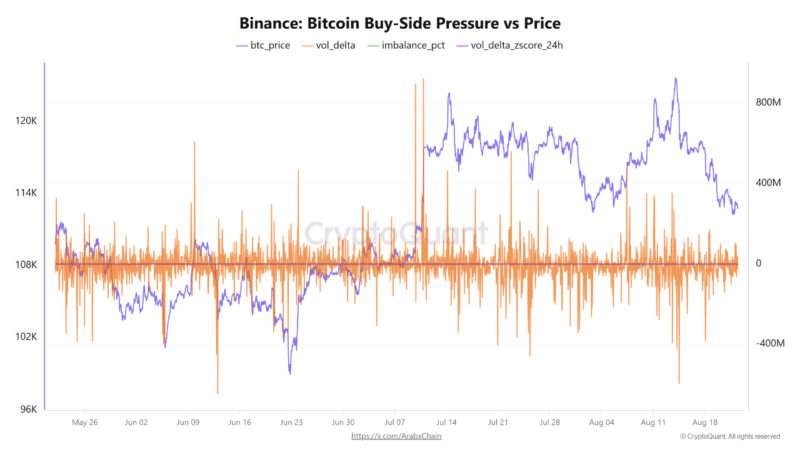Verto.exchange founder explains why he built the first DEX on “permaweb” protocol Arweave

CryptoSlate recently had the opportunity to chat with Tate Berenbaum, the founder of Verto.exchange, a decentralized trading protocol built on top of Arweave.
Arweave describes itself as a new type of storage that backs data with sustainable and perpetual endowments, allowing users and developers to store data forever.
Verto was established in July of 2020 and was the first platform users could trade profit-sharing tokens on. As a decentralized network of trading posts built on top of Arweave’s “blockweave,” anyone can host their own trading post and power the exchange, while also being incentivized to do so.
What is your professional background and how/when did you get into crypto?
Well, in the very least, I graduated middle school. I’m currently a senior in high school, but I found crypto around November of 2017, right in the heat of the last bull run. The first blockchain application I used was Steemit, and though I am not a writer by any means, the concept of being paid directly for content I produced captivated me. Though Steemit is not the platform it once was, it taught me the basics of dealing with cryptocurrency and showed me a new economic frontier.
Tell us about why you decided to start Verto.exchange?
Myself along with the team behind Nest.land, a way to store code permanently for others to use, had recently discovered a new concept the Arweave team was pioneering: Profit-sharing tokens.
We wanted to be able to reward developers for the value they provided to the ecosystem with the code they published on Nest.land, and building a profit-sharing token for it was the perfect way to accomplish this goal.
However, because the concept was so new at the time, no exchange existed that would allow people to easily trade between these tokens and AR, Arweave’s native currency. So, we decided to pursue building what became Verto: A token exchange protocol on the Arweave blockchain.
How many people are working on Verto and where is the team located?
Besides myself, we currently have 5 other people actively contributing to the codebase and one person helping with community relations. I met the developers from the Nest.land project, as they were frequent contributors to the open-source community on GitHub.
I’m American, but we have team members in Hungary, the UK, Germany, and India. Time Zones can be tricky to coordinate for synchronous meetings, but it also means there is always someone awake working.
Why did you choose to build on Arweave over other blockchains?
Arweave allowed us to accomplish the task of permanent, immutable, and always accessible data storage. This is exactly what we needed for Nest.land, and the new horizon of profit-sharing tokens made us quickly realize that storing data and compute on Arweave would be extremely economical.
Arweave has an interesting incentive mechanism called Profit-Sharing Tokens. How does Verto benefit from this?
Verto is powered by a network of trading posts, or servers built to handle inbound and outbound orders on the exchange. In order to disincentivize trading posts from handling orders incorrectly or maliciously, all trading posts are required to hold a stake in VRT, the Verto Protocol token. If a trading post acts maliciously, Verto’s profit-sharing community can vote to slash the stake of the trading post.
In addition to being used for governance purposes, VRT is a profit-sharing token, which means that a small tip is taken on any swap made. This tip is randomly given to a VRT token holder. Tips are taken on the currency a user is using to swap, which means that VRT token holders have a chance to earn any of the other profit-sharing tokens being traded on the exchange.
How does Arweave’s blockweave different from traditional blockchains?
Unlike traditional blockchains, Arweave’s blockweave is specifically optimized to store any amount of data indefinitely.
Where do you see the Arweave ecosystem over the next few years? What will be the major milestones?
I foresee the Arweave ecosystem continuing to expand as a vibrant community. Just in the past few weeks, the rate of growth we’ve seen has been unprecedented. New people are rapidly joining the community, collaborating with others, and creating profit-sharing communities of their own. I expect this growth to continue over the next years as Arweave continues being discovered by the masses.
I think that the milestones being set and achieved in Arweave will widely be determined by the applications and protocols on top of it. In complete honesty, I don’t know what the future holds, but I cannot wait to see what else people build. Arweave brings forward a new frontier for both data and finance, together.
What can you tell us about the Verto product roadmap? What upcoming features are you most excited about rolling out?
We’re committed to continue the development of the protocol and UI as we approach the Beta stage. With the creation of atomic assets, it’s become increasingly relevant to update our UI/UX accordingly. You can expect to see this soon! Additionally, we’re approaching the testing phase of Vallo, a mobile app for managing your Arweave assets.
What other applications that are being built on Arweave are you excited about?
I’m very excited to see applications/protocols like Community.xyz, ArDrive, Koi, Amplify, Feather, Limestone, ArGo, and Kyve prosper. Each of these applications have pushed the boundaries of what is possible on Arweave, and they serve to inspire future builders in the space.
Do you have any blockchain and/or crypto predictions for 2021 and beyond?
I think that crypto is going to continue being used by more and more. As time continues, it’s becoming increasingly obvious that this technology can solve problems that centralized entities or governments cannot. I think it’s just a matter of time before this technology is completely mainstream.
What are the biggest obstacles for mainstream adoption of crypto?
Regulations – Governments have not yet figured out how to regulate cryptocurrency. Because of this, applications have to take drastic, negative measures (such as geofencing the US) to ensure the safety of the applications’ creators and their users.
UX – There are only a handful of truly wonderful user experiences in crypto. Rainbow is a great example. In order for these complex subjects to be understandable by the masses, they must have simple and intuitive user experiences. I especially look forward to seeing more applications that utilize the technology in a way that people don’t even realize blockchain is under the hood.
What is your most controversial opinion relating to blockchain and/or cryptocurrency?
I believe that blockchain replaces the need for any centralized form of governance. Over the next 10 years, I foresee governments using blockchain to manage their native currencies and an exponential increase in the number of decentralized protocol startups.


